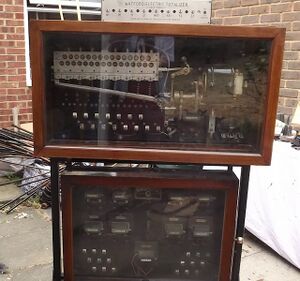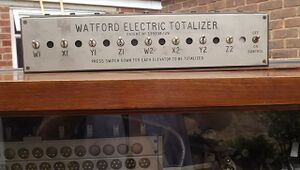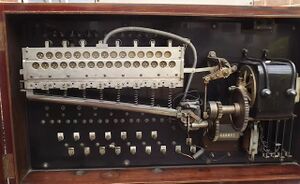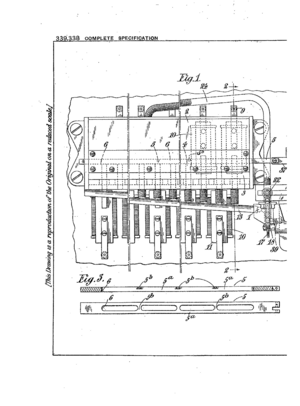Totalizer
Task Summary
- Unlock the two cases
- (2020-03-03) Lee has unlocked one of the cases
- Schematic diagram of counter display case
- Schematic diagram of Totalizer display case
- Schematic diagram of switching box
- Estimate operating voltages & try out counters
- Try out motor (mechanically disconnected from gear wheels)
- Investigate ball-bearing release and collection mechanism
- Jointly decide what to do next with it.
Notes and Suggestions
(Please add contributions)
The Totalizer Story

The Totalizer was built in the late 1920s and was installed in a newspaper building in Fleet Street. Every night they produced about 1.5 million copies (sold for a halfpenny each), distributed throughout the country by train and lorry from the Fleet Street presses.
The installation consists of two display cases. One holds 9 electromechanical counters. These would show how many newspapers (or bundles of newspapers?) were produced each night as the paper was being printed.

There must have been 8 separate production lines to cope with the volumes required, each with a separate counter. But how to add up these 8 subtotals, to find the number of papers printed?

The Totalizer, in the other display case, released a ball-bearing every time one of the eight counters clicked up. The ball-bearing ran down a slope and operated a switch, which incremented the ninth electromechanical counter in the first display case.
The ninth counter would then show the total number of papers, which should correspond to the sum of the numbers being shown on the first 8 counters.
This was a neat solution to the problem of how to add together the 8 separate inputs. It would not have been practical to combine the 8 inputs directly into one counter, as any two or more inputs signalling at the same time would just combine into a single signal, and numbers would be lost.

Watford Electrics, who made the device, registered a patent explaining all the details Improvements in or relating to counting devices. These days, we would do it with an Arduino.
Richmond Makerlabs hopes to get the Totalizer working again, and start it monitoring and counting some 8 randomly-occurring events in today's world. Open to suggestions.
Watford Electric and Manufacturing Co
https://www.gracesguide.co.uk/Watford_Electric_and_Manufacturing_Co